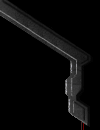|
|
|
Resources Resources | Transports | Special Ability Ranges |
||||
 |
In order to build up your army, you will need to collect the raw materials necessary to develop and build your war machines. There are two types of resources, Minerals and gas. You will need to procure both in order to build your full complement of troops.
Gathering Minerals
Placing Your Command Centers/Nexus/Hatchery When given the choice to place the building closer to Minerals or gas, pick Minerals. When you place it closer to gas, you have to build more workers for each of the Mineral chunks, but when you are closer to the Minerals, you need only build more workers for one gas spot, rather than 5-10+ Mineral spots (since you can only mine geysers with one worker at a time). Since Minerals come in multiple chunks and do not require a building to extract them they are much more plentiful. More often than not, gas is a worry while Minerals are not. Minerals are required for all buildings and units but there are many Mineral-only units, consisting of the lower tech tree units like the Terran Marines, SCVs, and Basic Buildings; Protoss Probes, Zealots, and Basic Buildings; and Zerg Drones, Zergling, Overlords, and basic buildings. While players can survive on Minerals only it is not recommended, since both upgrades and high-level units will be unavailable. Gatherers bring back 8 Minerals per trip. To see how many Minerals are left in a particular patch, select it then look at the status display. A number will indicate how many Minerals are left. When you initially start the game, it is a bad idea to select all four workers and right click on a Mineral patch. What happens is that all four workers go to the same patch and try to mine it. Since only one can mine at a time, the other three wait in line for that specific Mineral. This makes for a very slow start early in the game when it's vitally important not to make mistakes. A faster way to do this is to individually select each worker and then right click on a different patch for each worker. The fastest way, which requires more micro management, is to initially select all four then right click on the same Mineral patch to get them moving, then individually select each one as they are moving and move them to their own patch. Either method is a significant improvement over simply ordering the entire group to mine one location.
Vespene Geysers Terran players must build a Refinery to extract the gas, Protoss must warp in an Assimilator, and Zerg players must morph a Drone into an Extractor. While an individual geyser has an effectively unlimited amount of gas within it, after a certain point the geyser "collapses" and only trace amounts of Vespene can be refined from it. Most players would do well to seek fresh geysers to ensure they have enough fuel to maintain their military. When a geyser collapses, you will receive the message: "Geyser has been depleted" and you'll hear the collapse. Pressing the space bar will center your screen on the collapsed geyser. At this point, it is not worth it to further mine the geyser unless there are no further fresh geysers available. If you do not find a new geyser, you will soon notice a large decrease in your gas gathering. Select all the workers mining the collapsed geyser and move them to another spot. When moving workers carrying gas, be sure to right-click them on the new geyser so they will start returning from the new gas mine. If the gas mine is as close as possible to your headquarters then you don't need more than four workers collecting gas from that location. If you place any more on mining gas they will be wasted. If the gas mine is further away, you may need an additional worker or two to collect gas at the fastest speed. If you see more than one gas miner stacked up waiting for the gas mine to be free, you know you have too many mining it. Gas is by far the most coveted resource. It is used for upgrades and to build all the higher tech tree units and buildings. One should attempt to get multiple gas mines until gas is not a worry. It is not uncommon to need 3-4+ gas mines to properly power a high-tech war machine. Generally it is not a wise idea to specifically attack workers mining gas. Only 4 workers are usually mining the gas at a time, and it is really easy for your opponent to make another 4 workers if they are destroyed, then put them back on gas. Target the workers mining Minerals specifically because there will be many more workers in that area, and they will be fully exposed while they're harvesting. To see how much gas is left in the geyser, select it or the Refinery (Assimilator, Extractor) then look at the status display. A number will indicate how many gas is left. A depleted mine will simply read "depleted". You might want to select a few units and destroy your own Assimilator, Refinery, or Extractor after the geyser is depleted so you know which geysers are still worth mining or not. Just select a few guys and destroy it. With multiple towns it can be quite confusing which geysers are depleted and which aren't, and this method can help.
Online Privacy Policy Battle.net Terms of Use Agreement ©2019 Blizzard Entertainment. All rights reserved. |
|
||
|
|
||||